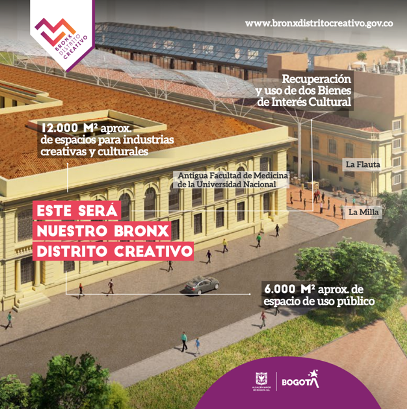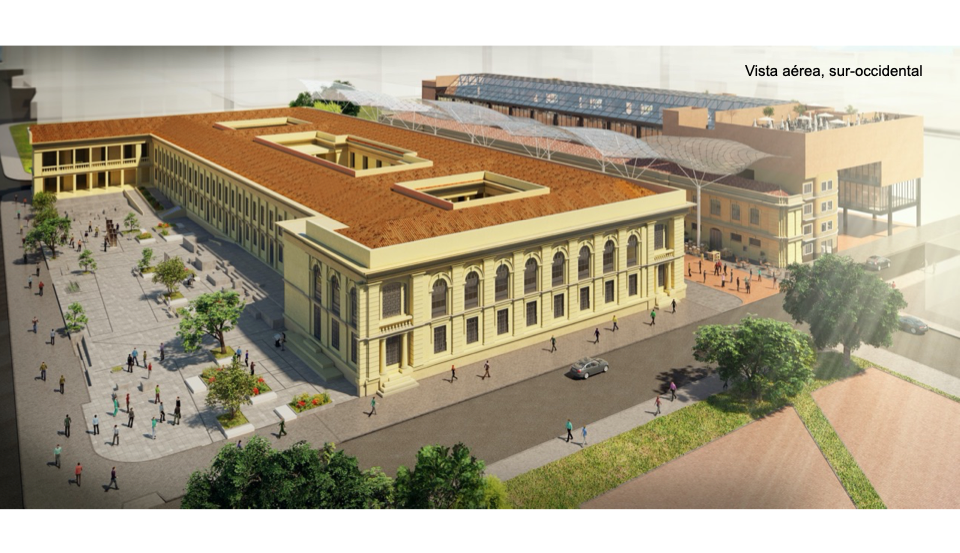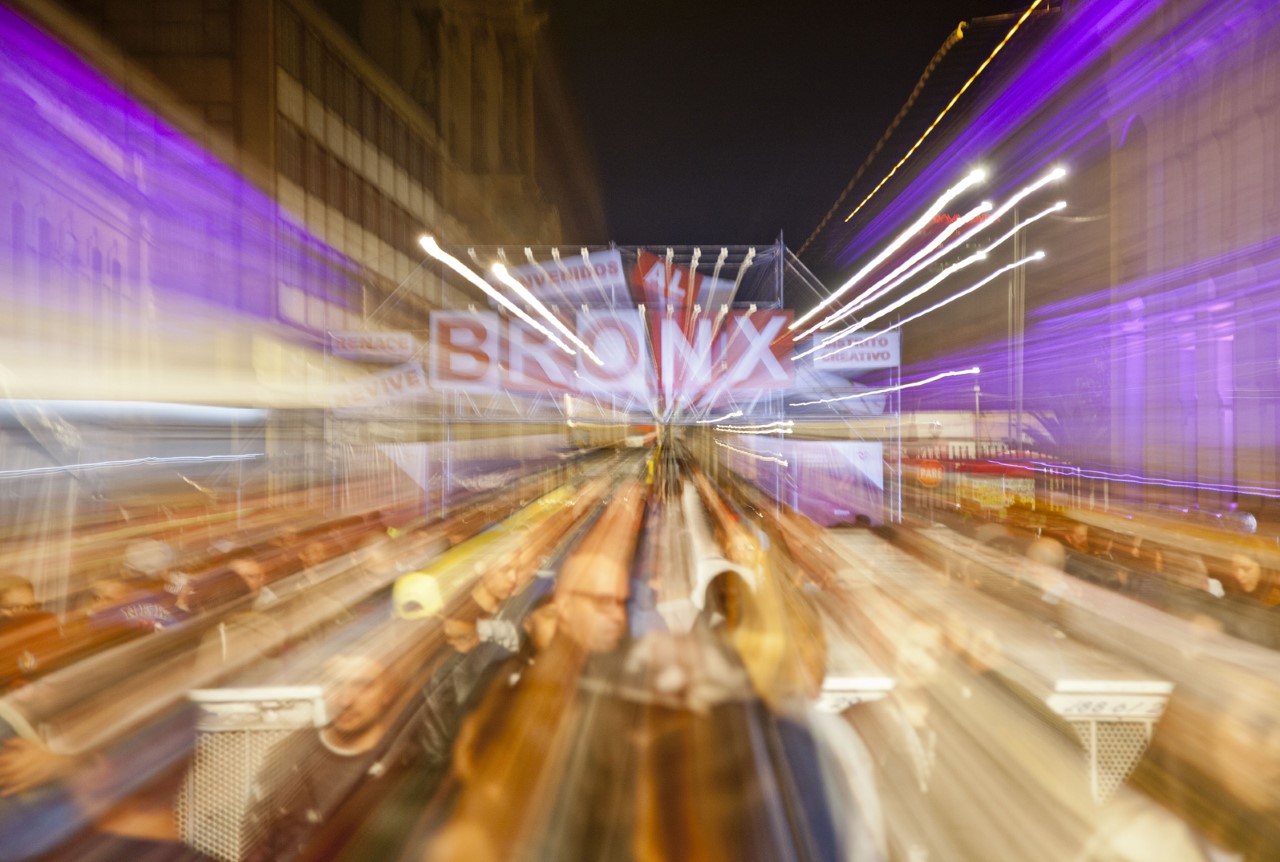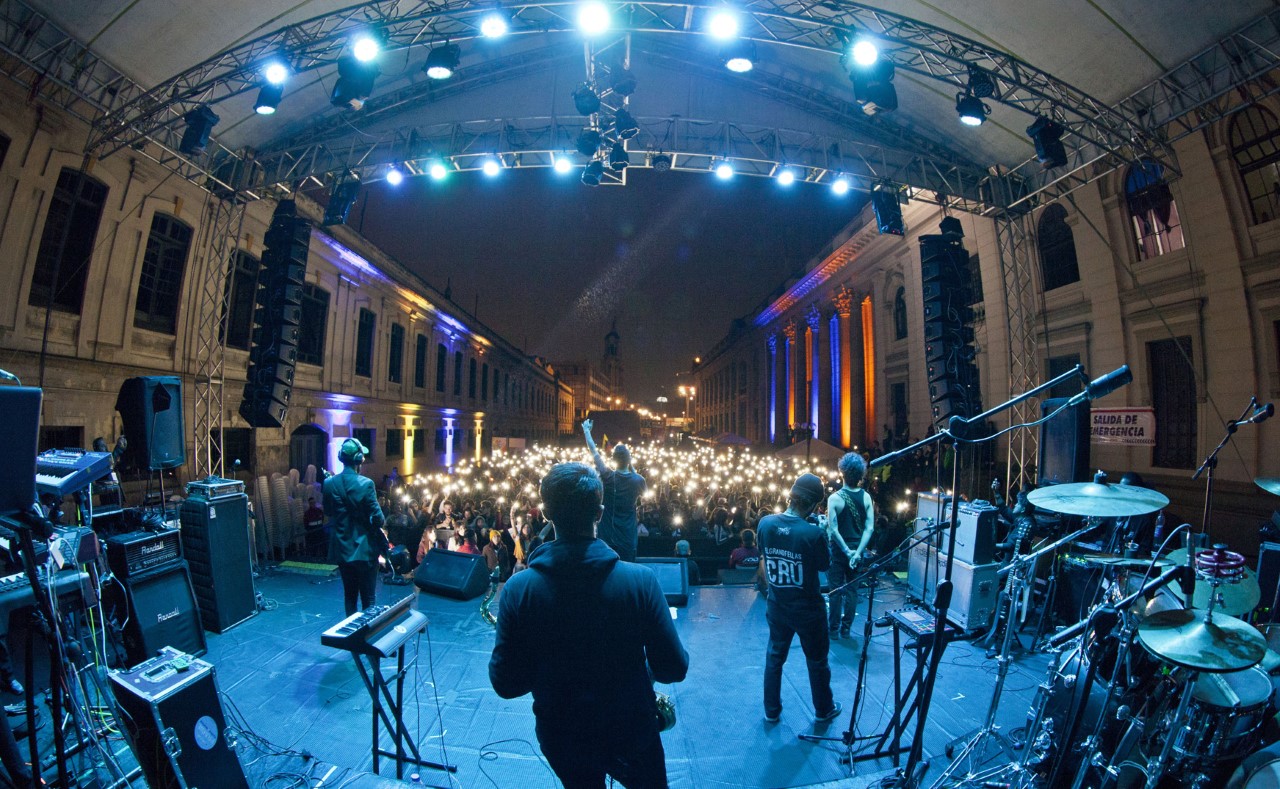 Bronx Creative District - © City of Bogotá
Bronx Creative District - © City of Bogotá Bronx Creative District - © City of Bogotá
Bronx Creative District - © City of Bogotá Bronx Creative District - © City of Bogotá
Bronx Creative District - © City of Bogotá Bronx Creative District - © City of Bogotá
Bronx Creative District - © City of Bogotá
City
Bogotá
Main actors
City Government, Private Sector
Project area
Neighborhood or district
Duration
Ongoing since 2016
Revitalizing the city’s downtown area as a cultural and creative precinct
The Bronx Creative District (BDC) is a project developed by the city government for the renewal of Bogotá´s Downtown area. It proposes actions to transform the area into a space promoting community inclusion, while strengthening the creative and cultural economy.
This project provides the opportunity to build a new future for the downtown area, one that generates community trust and engagement by establishing activities associated with creativity, culture, innovation and entrepreneurship. Thus, fostering the revitalization of this part of the city that for decades has been stigmatized by violence and crime.
The Bronx Creative District project forms part of the District Public Policy for Cultural and Creative Economy and the Orange Development Areas (Areas de Desarrollo Naranja - ADN) defined by the National Government.
In 2016, the Bronx was subject to a substantial intervention by the public authorities due to the illegal and high-risk activities that were operating in the area. The Mayor's Office of Bogotá initiated a process of reappropriation of public space. In 2018, two district administrations started developing the process.
The goals of the BCD are the recovery, enhancement and opening for public use of the cultural heritage buildings "La FLauta" and the “Facultad de Medicina de la Universidad Nacional de Colombia”. The project aims to make them available for cultural and creative activities for the community. In this context, the project has three objectives:
- hosting cultural activities associated with the BCD.
- creating opportunities for the reactivation of public space and fostering social inclusion.
- supporting cultural and creative entrepreneurship that promotes innovation and collaborative work.
The Bronx Creative District project includes the following components:
- A new framework for the provision of cultural goods and services (events, conferences, concerts, exhibitions, etc.).
- Spaces for the creation, production and dissemination of different segments of the creative and cultural industries.
- Meeting places and collaborative work environments (co-working, fab-labs, seedbeds, incubators).
- Support and wellness services for neighbors, tenants and visitors.
- Memory space for the local community and co-creation laboratory.
The reappropriation process has been developed under the following phases, some of which have already been completed:
- Land acquisition: 46 properties were acquired for the development of the project.
- Studies, designs and construction documents are being completed for the adaptation of heritage properties.
- Legal/financial and technical structuring of a public-private association model to construct the new building and to operate all infrastructure and the public space.
- Building infrastructure: the restoration of two existing heritage buildings and the construction of a new building and new public space will be carried out. There are 3.9 hectares of direct district intervention in the Bronx Creative District
- Approx. à 28.000 m2 buildable square meters
- Approx. à 12.000 m2 creative economy useful areas
- à 5.900 m2 new public space use
- Create and develop a community laboratory focused on local memory, care, culture, and strengthening of the social fabric (Esquina Redonda).
- Social Management: Activities that include the participation of local government entities, collectives, artists and community organizations.
Funding and resources have been provided by the City of Bogotá through the Gilberto Alzate Avendaño foundation – FUGA. Public resources are: COP $182.584 Million (USD $53.3Million) since 2019.
Developers through the public-private association will provide resources for the new building construction works and will operate the whole project.
The development of the BDC project has been made possible by the coordinated work of the Gilberto Alzate Avendaño Foundation, the Empresa de Renovación Urbana ERU and the participation of the culture, habitat, government, economic development, education, and social integration public entities.
In order to promote the participation of creative and cultural industries entrepreneurs, designers, artists and other stakeholders in the first Creative District of Bogotá, a stakeholder’s convention was opened in 2018 and it received more than 1,400 proposals for projects and enterprises interested in being part of the BCD.
Since 2018, more than 60 artistic and cultural activities have been carried out in the old area of the Bronx, with more than 35,000 participants, like the Festival Centro, the Festival Naranja and the event (panel discussion) about the movie Hollywood Mile 22, among others. The project offers the city a new cultural stage for mass events, boosting the cultural offering in the downtown area of the city.
The main beneficiaries are the stakeholders of the cultural and creative ecosystem of the 3 districts located in Bogotá´s Downtown (La Candelaria, Santa Fe, and Los Mártires) and its 207,000 citizens. In addition, the project generates an impact on a floating population of more than 2 million people.
Commercial risks.
It was difficult to find private developers who have experience both in the construction and operation of cultural heritage buildings and creative industries. The project management has made the decision to contract a public-private association model that guarantees the private sector has the freedom to form the team that will facilitate the development of the project.
Difficulty in Cultural Heritage Formalities about buildings interventions.
Project proponents identified difficulties obtaining licenses to do construction work in cultural heritage. The project management (FUGA) has made the decision to advance the cultural heritage refurbishment and adaptation, obtaining licenses on their own.
Misunderstanding of the project objectives by some local leaders and organizations
Some advocacy groups have claimed that the government seeks to benefit private investors with the renewal plan of the city center. This reflects a lack of comprehension of public policies and the creative economy.
The Bronx Creative District enables, entrepreneurs, artists, creatives and local communities to work together to strengthen their projects and initiatives. This generates a positive impact in the City’s sustainable development agenda, through job creation, innovation, social inclusion, the reduction of inequalities and the transformation of the urban environment.
Progress is being made by implementing a multi-component project, including the development of a permanent cultural agenda through the organization of various kind of events.
The collaboration between stakeholders (community and local organizations, government entities, cultural managers and artists, and entrepreneurs) has been a success factor of the project that is replicable to other urban renewal projects.
City of Bogotá’s Best practice document
External links / documents
On Map
The Map will be displayed after accepting cookie policy